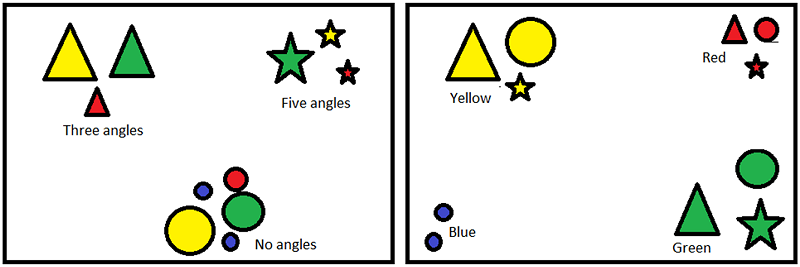In many countries, research programs focused on discovering high-quality, sustainable protein sources are a top priority. The current main sources of protein are plants (57%), meat (18%), dairy products (10%), fish and shellfish (6%) and other animal products (9%). Side streams from fish and meat are such potential nutritious protein sources as they have a favourable amino acid composition, including essential amino acids. However, approximately 50% of the fish biomass in Europe is currently treated as waste, with protein rich side stream fractions, such as heads, bones, skins, and viscera, being presently underutilized. There are potentially more than 5 million tons of side stream biomasses available for higher-value applications. Today, these are mainly used within the feed sector as fishmeal and silage, in pet food or discarded. Thus, this is clearly an untapped opportunity to convert these fish side streams into valuable ingredients and products.
Aside from fish protein, protein hydrolysates have attracted attention from the food industry. Via an enzymatic process, the fish protein is converted into smaller peptides containing 2-20 amino acids. These amino acids and bioactive peptides act as antioxidants and antimicrobials as well as playing a role in controlling hypertension and immunomodulation. Potential other applications for fish protein hydrolysates are improving the nutritional value of formulations for the elderly or sports nutrition or improving the functional properties such as solubility, gelation, water holding capacity, emulsifier, or foaming.
Fish proteins can potentially be utilised in nutritional supplements as Fish Protein Concentrates (FPC), fish hydrolysates, bioactive fish peptides (gelatine and collagen) and other fractionated bioactive compounds found in fish (e.g. terpenoids, steroids, enzymes, alkaloids, fatty alcohol esters and glycolipids).
Fish oil is a major source of the omega-3 fatty acids, docosahexaenoic acid (DHA) and eicosapentaenoic acid (EPA), which play an important role in regulating body functions and health. Lipids can be separated from fish side stream biomass and utilised in omega 3 nutritional supplements for humans that seek to improve their cardiovascular health.
Protein hydrolysates and stickwaters (discussed in module 1.4) are essentially aqueous phases composed of peptides and free amino acids, along with small water-soluble components present in the substrate. Small water-soluble components in the raw material will be present in the water phase and can influence the tastes and flavors of the final products. These components include NaCl and other mineral salts, nucleotides, non-protein amino acids, biogenic amines and possibly small amounts of lipid oxidation products. Moreover, marine fish tissues contain the nitrogenous compound trimethylamine oxide (TMAO). Fish contain relatively high amino acids and amines, including TMAO, in their blood which aids their increased osmoregulation needs resulting from living in hyperosmotic water environment (approx. 3% salt content). TMAO can be converted to trimethylamine (TMA) during bacterial spoilage, responsible for the unpleasant "fishy" smell of stale products.
The formation of bitter peptides generated in the hydrolysis process may pose a challenge in the production of commercial protein food products. Bitter taste is generally ascribed to small hydrophobic peptides, where both presence and position of hydrophobic amino acids are important for the bitter taste sensation. Moreover, it has been suggested that the formation of bitter taste is solely dependent on the chosen hydrolytic enzymes (proteases) and less influenced by the raw material. Thus, a proper choice of protease(s) and downstream processing conditions are important for the final taste properties of protein hydrolysates.
The most common tastes and flavors attributed to fish protein products are listed in Table 1.1.6. Even though bitter taste may be reduced by proper choice of processing conditions, the remaining tastes and flavors of a protein product are not dependent on enzyme and rather on raw material composition and quality, and ascribed to small molecules <200 Da. Thus, by introducing nanofiltration technology it may be possible to remove most of these molecules and consequently reduce the overall taste intensity.
| Attribute | Description of tastes related to the attributes |
|---|---|
| Flavor intensity | Strength of all flavors in the sample |
| Sweet taste | Basic sweet taste (sucrose) |
| Salt taste | Basic salt taste (sodium chloride) |
| Sour taste | Basic sour taste |
| Bitter taste | Basic bitter taste |
| Umami taste | Basic umami taste |
| Acidic flavor | Related to a fresh, balanced taste from organic acids |
| Metallic flavor | Related to taste of metal (ferrous sulphate) |
| Sea flavor | Related to taste of fresh, salty sea |
| Fish flavor | Taste of boiled white fish |
| Trimethylamine flavor | Taste of trimethylamine |
| Cloying flavor | Non-fresh, nauseating flavor |
| Rancid flavor | All rancid flavors (grass, hay, stearin, paint) |
| Fullness (mouthfeel) | Textural properties related to flow resistance |
| Astringent (mouthfeel) | Related to complex feeling of contractions and dryness of the mouth |
| Fatness (mouthfeel) | Surface textural property related to perception of fat in a product |
Sensory evaluation is a science of measurement that applies principles of experimental design and statistical analysis to the use of human senses. A vast array of sensory tests is available, where both trained judges and untrained consumers can be used. The three types commonly used sensory testing are listed in Table 1.1.7.
| Question of interest | Test | Panelists |
|---|---|---|
| Are the products different? | Discrimination | Screened for sensory acuity, oriented to test method. Trained/untrained judges. |
| How do the products differ in sensory characteristics? | Descriptive | Screened for sensory acuity. Usually highly trained judges. |
| How well are the products liked? | Affective | Screened for product acceptance. Untrained judges. |
The description of the tastes and flavors present in different food products are often assessed by descriptive analysis by an expert sensory panel. Descriptive sensory analyses allow the sensory scientist to obtain complete sensory descriptions of products and identify underlying ingredients, process variables and attributes that are important for the products. Descriptive sensory analyses require a trained panel with high a degree of commitment and motivation. The training phase begins with the development of a common language that comprehensively and accurately describes the product attributes.
There are several different methods of descriptive analyses, but most frequently generic descriptive analysis is used. This method combines different approaches from all methods of descriptive analyses. In a generic descriptive analysis, the samples are evaluated by a trained panel (8-12 judges) guided by a panel leader. The analysis is generally performed in the following stepwise procedure:
- Attributes are chosen: Attributes relevant for the products are chosen and discussed by the panelists.
- Panelists are calibrated: Samples with variance in the sensory attributes tested are used to calibrate the judges of the potential variance in attribute intensity.
- The test is performed: Samples are served in randomized order and the judges scale the chosen attributes on an unstructured line.
- The results are analyzed: Statistical evaluations of the results are performed. Analysis of variance (ANOVA) and multivariate techniques are most commonly used to evaluate sensory data. The panelists' performance, repeatability and reproducibility are validated through statistical software.
Projective mapping (or Napping) is a projective method which provides information about the overall similarities and dissimilarities among a set of products. Assessors are asked to try the samples and locate them on a sheet of paper according to their differences and similarities using their own words. The sheet of paper should have a rectangular shape (60x40 cm) and consequently, the X-axis become visually more important than the Y-axis. Thus, the assessors will prioritize the reasons why they perceive the stimuli differently. The idea of napping is to collect through the positioning of the samples, the first and second "reason" why they are perceived differently. Figure 1.1.11 gives an illustration of two potential napping- sheets from the same products, where the products are separated based on shape or color. The samples could also have been separated based on size.
Spectrum analysis and ranging tests are useful for evaluating single sensory attributes, such as bitter taste, where products are given scores (Spectrum) or ranked based on the desired attribute. Regardless, depending on research question, several methods for sensory evaluation of food stuffs are available.







